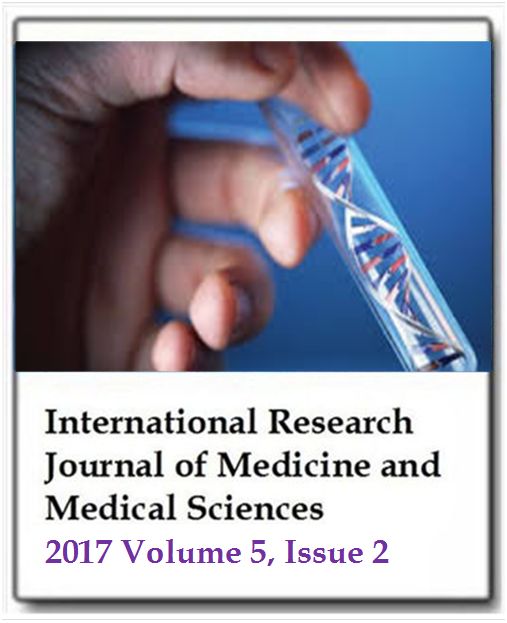Pattern and indications for tooth extraction in a tertiary hospital, Kebbi State, Nigeria
Taiwo OA, Oduola TK, Farouk OM, Braimah RO, Ibikunle AA, Labbo JS, Musa K, Awwal N, Ayodele MF, Amao ATInternational Research Journal of Medicine and Medical Sciences
Published: June 22 2017
Volume 5, Issue 2
Pages 30-36
Abstract
The aim of this study is to investigate the reasons and pattern of tooth extraction in patients attending the outpatient Dental clinic of Sir Yahaya Memorial Specialist Hospital, Kebbi, North-West Nigeria between January 2014 and December 2016. The design was a retrospective study of records of individuals who had tooth extraction. Patients’ records were retrieved and analyzed for gender, age, indication(s) for tooth extraction and type of tooth/teeth extracted. A total of 428 extractions from 213 (51.0%) males and 204 (49.0%) females (M:F = 1.04:1) were undertaken during this period. There was no statistical significance difference in gender against indications for extraction [p = 0.8521, 95% CI = 0.018 (-0.096 to 0.131)]. The age ranged from 1 to 75 years (mean ± SD, 30.7 ± 15.2 years, median = 30.0) with majority of the patients (77.6%) not more than 40 years old. Teeth extracted were for patient in the age group 21-30 years. Three hundred and fifty five patients (85.0%) presented with pain while routine dental check up accounted for 4 (1.0%) cases. The major indications for extraction were dental caries and its sequelae 341 (79.7%), periodontal disease 44 (10.3%) and trauma 20 (4.6%). Teeth in the lower arch were more regularly extracted than upper teeth. The lower first molars were the principally extracted teeth. In conclusion, dental caries and its sequelae was the main reason for removal of teeth in this subset of Nigerian population. Thus, it is imperative to ameliorate the underlying social determinants of dental caries and eliminate barriers limiting access to primary preventive oral health care.
Keywords: Dental caries, tooth extraction, indications, inequality, social determinants, oral diseases, prevention.
Full Text PDF
